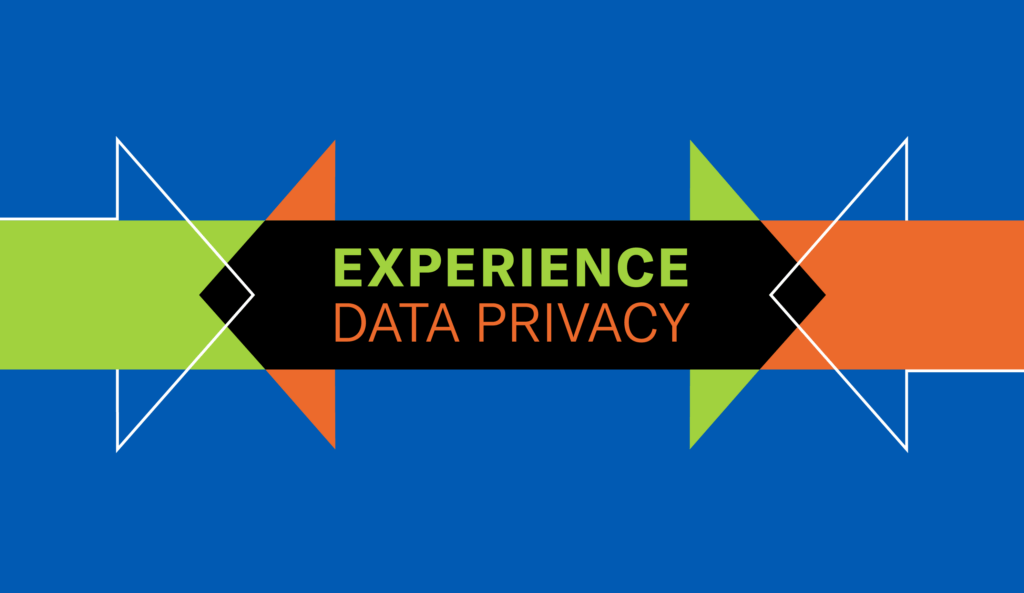Why Data Privacy and Customer Experience Are Not at Opposite Ends

Thomas Butta Chief Strategy & Marketing Officer

Share to my network
In this article
Categories
Book a meeting
Connect with our team of experts to discuss your conversion and loyalty goals, and how we can help you achieve them faster.
Get a demoThis article originally appeared on Spiceworks.
Consumer data is critical for a brand to improve customer experience. Simultaneously, brands need to take care of data privacy. But how can companies take a practical approach to data privacy and improve customer experience in a mobile-first world? Thomas Butta, chief strategy and marketing officer, Airship, explains it here.
Customer data privacy has a trajectory similar to environmental, social and governance (ESG). They are both becoming table stakes.
When companies are transparent about ESG initiatives, they are sending a strong message to their employees as well as current and future customers. The same level of prioritization must be done for data privacy. If privacy is mishandled, the hit to brand reputation could be costlier than regulatory fines. It is time for data privacy, as part of a customer-centric strategy, to become a standard operating procedure for every business.
Customer data is the backbone of any marketing strategy and the linchpin of ecommerce. But today, we are seeing the clock run out on mining consumer information versus minding customer needs. As third-party data dwindles, first- and zero-party data are taking center stage.
Brands now have an imperative to focus on creating direct digital relationships to understand their customers better and provide the personalized experiences they expect. And thanks to changing behaviors of mobile consumers, the best way to sustain this reciprocal value exchange is through mobile apps.
According to a Mobile Shopping Report, 68% of surveyed U.S. consumers say they are shopping more often now with their mobile phones than two years ago, with eight in 10 mobile shopping within the last 12 months. This is particularly true among Gen Z (79%) and millennial (77%) respondents.
No matter where you are on your mobile app journey, a practical approach to personal data privacy is essential for building the kind of profitable long-term relationships that brands and customers want.
Why Apps, Why Now?
Mobile apps have become the consumer’s preferred destination for contextual interactions, fast transactions, and streamlined experiences that blend their online and offline lives. Industry research finds that app-toting customers generate more than three times greater revenue and transaction frequency than other shoppers. Earnings reports from public companies underscore the tremendous economic value of mobile app experiences:
- For The Home Depot, “Sales leveraging our digital platforms increased 12% versus the second quarter last year. We also saw record downloads, traffic in sales via our mobile app. We continue to see improved conversion rates, as ongoing enhancements within our digital properties are resonating with our customers.”
- For Chipotle, “Incredibly, our full year digital sales of $3.4 billion is nearly 3.5x what we did pre-COVID in 2019. Digital has proven to be sticky as it is a frictionless and convenient experience.”
Successes like these are not simply a matter of having an app and persevering. Brands know they compete primarily on customer experience. Many are making apps their most valuable brand assets by tightly linking loyalty programs, always-on utilities, digital exclusives and concierge services. At the core of all these relationships? Data. Data. And more data.
Chipotle has invested in digital kitchens and “Chipotlanes” (digital-only pickup lanes) and now cites an average of 10 minutes from a customer’s digital order until it is ready for pickup. Its digital sales are 3.5X pre-COVID. Early in the pandemic, American Eagle Outfitters solved unique curbside pickup challenges because many of its locations were inside malls. They added trip-tracking and order-ahead features that streamlined experiences for both customers and store associates.
These impressive economic returns should not be surprising. “Forrester’s Customer Experience Index (CX Index™) data shows that companies that deliver superior CX grow revenues five times faster on average than their competitors with inferior CX. Companies with superior CX have customers who are willing to pay a higher price for products and services,” (Forrester Research, Inc., Transform Customer Processes And Systems To Improve Experiences, February 22nd, 2021).
Simply put, apps are where the value exchange between customers and brands is most respected and rewarded. Ahead of more traditional information like postal address or demographics, customers are more likely to share “interests relevant to a brand,” “their communication preferences,” and “what they have browsed on a brand’s app or website,” to receive personalized offers and special incentives. On the flip side, consumers are least likely to share “information from their social profiles” and “their behaviors across unrelated websites and apps.” As I said earlier: mind, do not mine customers.
This is actually great news all around. People (like us) want a much more customer-centric approach. They are willing to share valuable information in exchange for mobile-enabled conveniences and personalized services, which in turn, allows brands to serve them better and build valuable relationships over time.
Then What’s the Hold-Up?
Survey results show that mobile app experience (MAX), both as a concept and set of best practices, is still very much a frontier. Many companies struggle to marshal resources and apply agile methods to generate greater value from mobile apps.
To optimize customer experience, brands need to understand whom they are talking to and create moments across touchpoints, including platforms, devices and channels that customers engage with throughout their various journeys.
Fintech company Chipper Cash focuses on unlocking financial barriers in Africa through its app-only approach instead of brick-and-mortar branches. Personalization at scale helped the company serve 5M app customers in five markets and reach $1.5B in total processes per quarter.
Experience trumps promotion, which means brands should be providing valuable experiences in moments people are engaged with the app. Marketers must be empowered to go beyond messaging and near-total reliance on developers. They need both no-code capabilities and organizational agility to continually optimize onboarding, feature adoption, and opt-in flows and progressively learn about the interests and preferences of each customer.
A no-code app experience platform empowers the entire team. Developers get to focus on the next set of innovative, market-differentiating app features. And the app’s marketing and product teams gain more ownership over the customer’s mobile app experiences. It is all about making life after downloadTM more rewarding and productive.
Think of communications around your app as a series of personal invitations. Make sure customers know what is in it for them. Make sure they know exactly how you will and will not use their data. Meet them where they are. That is how you build trust.